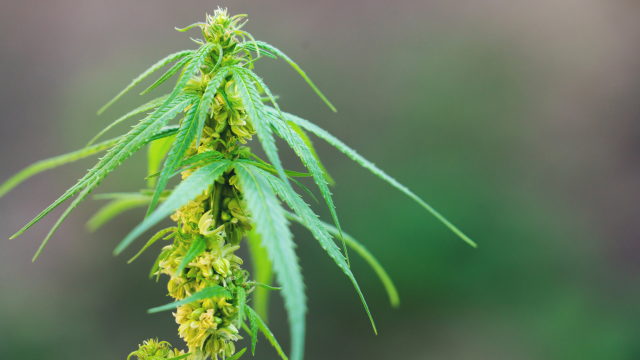Cannabis cultivation is usually all about the female plants, which are known for their buds and potent cannabinoids. Male cannabis plants play a crucial but often overlooked role in the cannabis cultivation process.
Male vs Female Cannabis Plants: Differences
The primary purpose of male cannabis plants is to produce pollen, containing the genetic material needed for fertilization. However, this can become an issue for most cultivators who have the female plants’ dank buds in mind. Let’s take a look at male cannabis plants, shedding light on their significance, characteristics, and the role they play in the world of cannabis cultivation.
Early Signs of a Male Plant: Male Cannabis Plant Identification
Distinguishing male cannabis plants from their female counterparts requires a keen eye. Typically, males exhibit certain characteristics that differentiate them from females. Male plants tend to have thicker stems, fewer branches, and a generally less bushy appearance. The most distinguishable feature is that male cannabis plants produce pollen sacs. Recognizing these key features is crucial for cultivators who want to separate males from females in their cannabis grow.
While female plants take the spotlight for their flower production and cannabinoid-rich buds, males are equally essential in the process of reproduction. Male cannabis plants release pollen to fertilize female plants nearby. When the pollen reaches the female flowers, it triggers the development of seeds, ensuring the reproduction and genetic diversity of the cannabis species.
Hermaphrodite Weed Plants
Some cannabis plants have the unique characteristic of producing male and female flowers, meaning they can grow buds, but they can also pollinate female plants (and themselves) to produce seeds. Hermaphrodite weed plants can occur naturally, but they can also happen when the plants are stressed during the cultivation process.
There are several factors that can cause stress for cannabis plants, including lack of water or nutrients, disease, changes in light exposure, and more. Sometimes it can be as simple as repotting a cannabis plant to move it to a different container.
Just like with male plants, hermaphrodite cannabis plants can pollinate the surrounding female plants, so it is best to remove them and separate them from the grow as soon as they’re noticed.
How do Male Cannabis Plants Affect a Cannabis Grow Operation?
Male cannabis plant pollination can be a threat to cannabis cultivation, especially in the commercial sector, where seedless (sinsemilla) flower production is the goal. It is important to note that only female cannabis plants produce cannabis flower buds. When female plants are pollinated, they begin to focus their energy on producing seeds, resulting in small or no bud yields.
What to Do with Male Cannabis Plants
Because of this, male plants are often removed from a cannabis grow to prevent pollination. This process ensures that female plants focus their energy on producing resinous buds rather than seeds. Cultivators should carefully monitor their plants during the pre-flowering stage, to identify and remove any male plants promptly. This approach to gender separation for cannabis plants is crucial for maintaining the quality and potency of the flower buds.
Benefits of Male Cannabis Plants: Breeding and Genetic Preservation
While male plants are commonly removed in grow settings, they play a central role in the world of cannabis breeding. Skilled breeders carefully select and cross-specific male and female plants to create new cannabis strains with desired traits. This process allows for the preservation and enhancement of certain characteristics, such as flavor profiles, cannabinoid content, and growth patterns. In this way, male cannabis plants contribute to the rich tapestry of diverse cannabis varieties available to consumers.
Aside from breeding, male cannabis plants can still be used to produce certain cannabis products, usually concentrates. This is because concentrates focus on extracting as much THC as possible from cannabis plant matter to produce resins. While male cannabis plants do not produce buds, they do contain some quantities of THC. Concentrates are a viable option to get as much out of a male cannabis plant harvest.
Male cannabis plants can also be used to produce hemp products where THC content isn’t important. Hemp products rely on the plant matter itself to create all sorts of products that are meant for consumption. So if you happen to have an unusually high number of male plants, it is not a total loss.
Male cannabis plants may not boast the same allure as their female counterparts, but their role in the cannabis life cycle is undeniably crucial. From facilitating reproduction to contributing to the development of new and exciting strains, male plants are an integral part of the cannabis cultivation process.
As the cannabis industry continues to evolve, a deeper understanding and appreciation for the diverse roles of both male and female plants will undoubtedly contribute to the continued growth and success of the cannabis plant and community.
